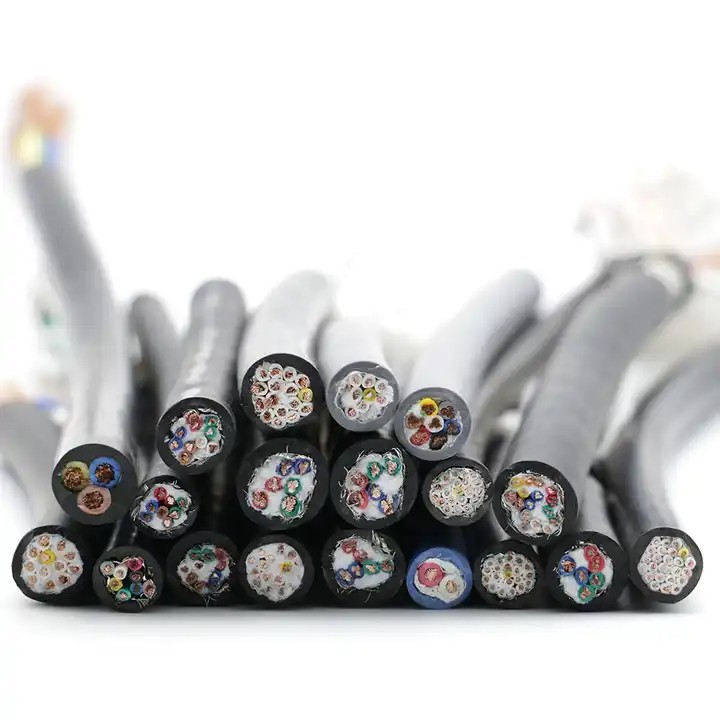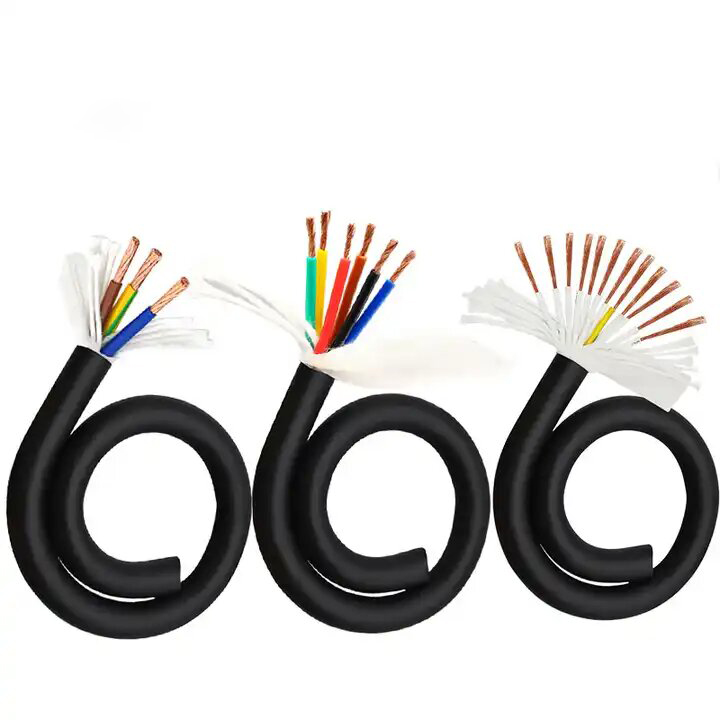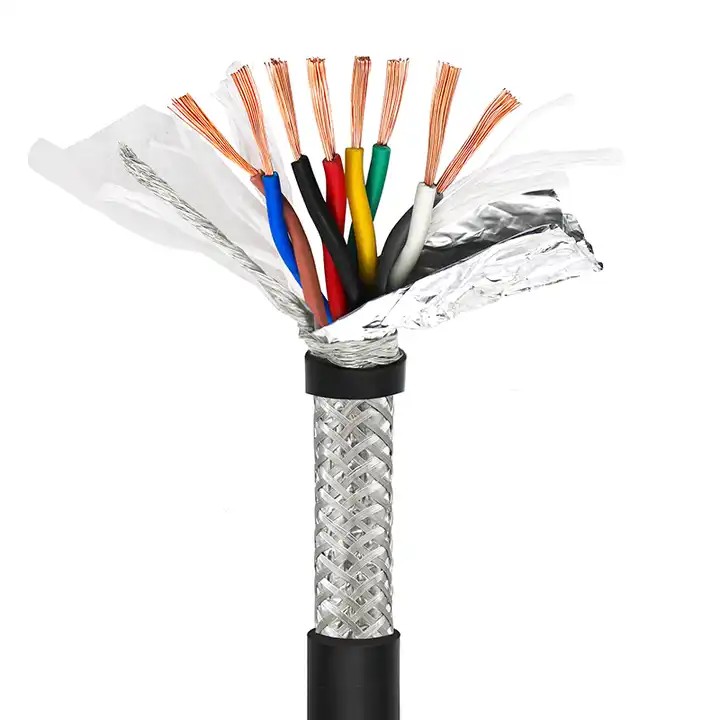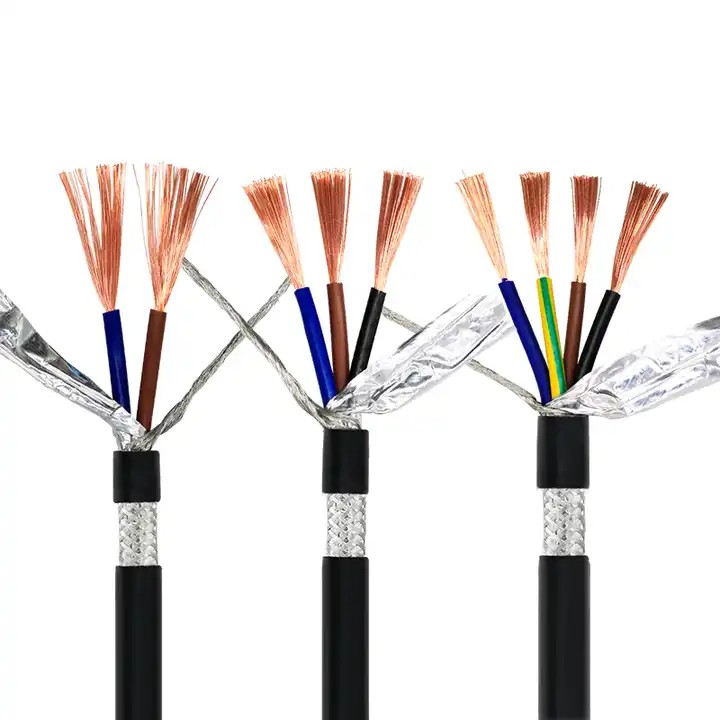How High Flexible Cable Is Revolutionizing Industrial Wiring Solutions
Published:
2025-07-15 09:13:46
Discover the benefits of high flexible cables, offering durability and reliable performance.
In the modern industrial world, high flexible cable has become a game-changer for electrical wiring systems. Industries like automation, robotics, and manufacturing increasingly rely on flexible cables due to their ability to handle dynamic movements and harsh environments. High flexible cables are designed to offer superior performance and durability, making them essential for industrial applications. In this article, we will explore how high flexible cable is revolutionizing industrial wiring solutions and why it’s becoming a top choice in various industries.
What Is High Flexible Cable?
A high flexible cable is specifically engineered to withstand continuous movement, bending, and twisting without compromising its integrity. Unlike standard cables, high flexible cables are built with materials and construction methods that enable them to endure repeated mechanical stress and environmental challenges. These cables are made from flexible conductors, reinforced insulation, and specialized jackets that make them ideal for environments where traditional cables may fail.
High flexible cables are often used in systems that require flexibility, such as robotic arms, conveyor belts, and machinery with moving parts. These cables can operate in dynamic and constantly changing conditions, offering significant advantages over conventional wiring solutions.
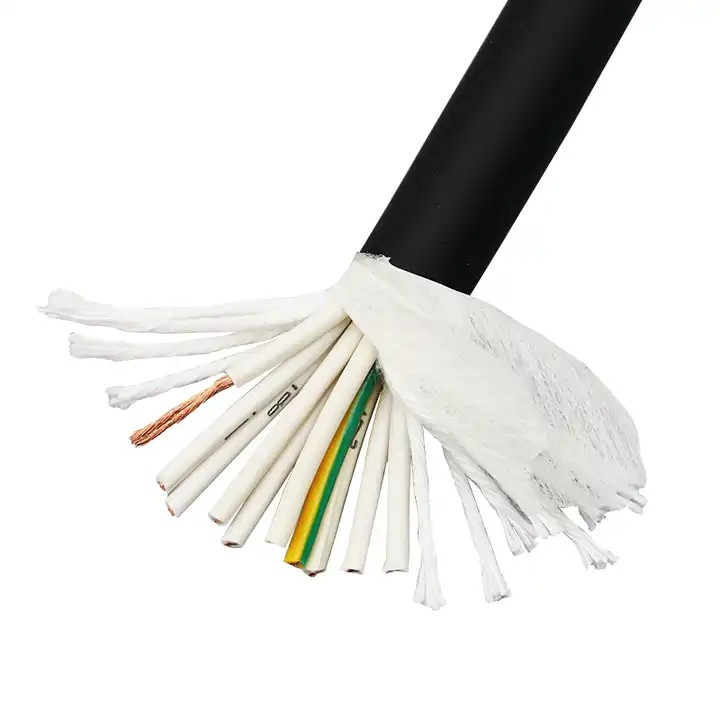
Key Benefits of High Flexible Cable in Industrial Wiring
High flexible cables offer numerous benefits, making them highly suitable for industrial applications. Below are the primary advantages that contribute to their growing popularity in industrial wiring solutions:
1. Durability in Harsh Environments
Industrial environments are often harsh, with exposure to extreme temperatures, chemicals, oils, and abrasions. High flexible cables are designed to withstand these challenging conditions, ensuring long-lasting performance. The materials used in these cables provide robust protection against damage, and their flexible nature ensures they can move with machinery without breaking down.
For example, in the automotive industry, where wiring systems are exposed to heat, vibrations, and heavy movements, high flexible cables can endure these stressors and continue functioning optimally.
2. Enhanced Flexibility for Dynamic Applications
The primary reason why high flexible cables are revolutionizing industrial wiring is their ability to bend and flex continuously. These cables are constructed with multiple fine wires that offer greater flexibility than traditional wires. This flexibility allows for smooth operation in environments where the cables need to move with machinery, such as in robotics or assembly lines.
High flexibility is essential in applications where cables are exposed to repetitive motion, such as in machine tools, conveyor belts, and robotic systems. The dynamic movement in these applications can lead to wear and tear on standard cables, but high flexible cables are designed to handle this stress, resulting in fewer failures and less downtime.
3. Improved Electrical Performance
High flexible cables are designed to maintain excellent electrical conductivity even when subjected to movement. The conductors within the cable are often made from copper or other highly conductive materials, ensuring efficient power transmission. This superior electrical performance is essential in applications where consistent energy flow is critical, such as in automation and data communication systems.
The materials used in high flexible cables also contribute to their ability to minimize signal interference and power loss, ensuring that equipment runs at peak performance. This makes them ideal for sensitive machinery, where any power disruption can lead to malfunctions or downtime.
4. Reduced Maintenance and Downtime
In industrial settings, equipment downtime can be costly. High flexible cables reduce the need for frequent maintenance or replacements. These cables are built to last longer than traditional cables, reducing the frequency of repairs or part replacements. Their durability and flexibility help prevent wire fatigue, ensuring that your machinery and systems continue running without interruption.
By choosing high flexible cables, companies can avoid costly downtime and improve the overall efficiency of their operations. This is especially important in manufacturing plants where production lines need to run smoothly at all times.
5. Space-Saving Design
High flexible cables are often designed to be compact and lightweight. This space-saving feature is crucial in environments where space is limited, such as in control panels, robotics, and industrial machines. The ability to bundle multiple flexible cables together without occupying excessive space helps streamline the wiring systems and improve the overall layout of equipment.
These cables also allow for greater freedom of movement within confined spaces, enabling companies to optimize their factory floor design and maximize productivity.
Applications of High Flexible Cable in Industrial Environments
High flexible cables are widely used across several industrial sectors due to their versatility and performance. Here are some of the most common applications:
1. Robotics and Automation Systems
In robotics, where precision, flexibility, and movement are crucial, high flexible cables are indispensable. They are used to connect sensors, actuators, and motors within robotic arms, enabling smooth and precise operation. The continuous movement of robotic components places a high demand on cables, which is why high flexible cables are the preferred choice.
These cables also perform well in automated conveyor systems, where they can endure repeated motion while ensuring reliable power transmission. High flexibility helps prevent cable breakage or fatigue, ensuring that the automated systems continue running smoothly.
2. Manufacturing and Machine Tools
Manufacturing processes often require machinery that operates in dynamic environments, where parts move or vibrate. High flexible cables are ideal for these applications, as they can move with the machinery without suffering from wear and tear. From CNC machines to assembly lines, high flexible cables ensure reliable electrical connections that are essential for machine performance.
Additionally, high flexible cables are used in welding equipment, cranes, and lifting systems. These environments require robust wiring solutions that can handle constant motion, and high flexible cables provide just that.
3. Automotive Industry
The automotive industry has high demands for durable and flexible wiring solutions, especially in areas exposed to extreme temperatures, vibrations, and movements. High flexible cables are used extensively in electric vehicles (EVs), engine control systems, and robotic assembly lines. Their ability to withstand the rigors of automotive environments ensures that they continue to function reliably under challenging conditions.
High flexible cables are also used in vehicle diagnostics and charging systems, where their resistance to environmental factors such as oils and fuels makes them a suitable choice for wiring solutions.
4. Data and Communication Systems
In data centers, telecommunications, and other communication networks, signal integrity and power transmission are critical. High flexible cables ensure that these systems operate smoothly without interruptions. The continuous movement of cables in data centers can be a challenge, but high flexible cables are designed to handle constant motion without degrading the signal quality or power flow.
5. Energy and Power Systems
High flexible cables are also used in energy production systems, particularly in renewable energy installations like solar and wind farms. These cables can be used to connect solar panels, wind turbines, and other renewable energy equipment, ensuring reliable energy flow even in outdoor or mobile systems.
Conclusion
High flexible cables are revolutionizing industrial wiring solutions by offering durability, flexibility, and improved electrical performance. As industries continue to evolve and demand more reliable and efficient wiring systems, these cables provide an ideal solution for environments that require continuous movement, harsh conditions, and space-saving designs. From robotics and automation to manufacturing and energy systems, high flexible cables are becoming a cornerstone of modern industrial infrastructure.
As industries look for ways to improve efficiency, reduce downtime, and ensure long-term reliability, high flexible cables are setting a new standard for wiring solutions. By adopting these cables, industries can enhance performance, save on maintenance costs, and ultimately drive greater productivity.


